Book Club
List of Books
- The Virus
- Never Enough Flamingos
- Never Enough Sisters
- Never Enough Lilacs
- Discover the 1930s
- The Pack-n-Go Girls Series
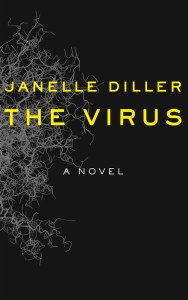
The Virus
Book Club Questions
- With nearly everything in life, we gain something and we lose something, even though it may be difficult to see in the moment. What would be the benefits of an RFID implant in every citizen? What would be the losses?
- What role does humor play in the story?
- What is the effect of the author’s use of first person narrative? Does it make the story more or less immediate or credible?
- How do you define civil disobedience?
- Have you ever committed an act of civil disobedience? What did you do? Why did you do it? If you haven’t, what would be the impetus for committing an act of civil disobedience? What would you be willing to do?
- What would society be like if no one ever committed an act of civil disobedience?
- If the government required everyone to get an RFID implant, what would you do? Why? What would you choose for your children?
- In Chapter 28, Maggie reminds the project lead, Michael de Leon, of the old cliche of the frog that boils alive because it doesn’t know when to leap out of the water that’s getting hotter and hotter. Given that all the technology in the book currently exists, think about where our society is today on a scale of one to ten. One represents room temperature water, in other words, total freedom without government control. Ten is boiling water, in other words, total control by the government. What number are we today as a society? Why do you believe this?
- In Chapter 40, Anna compares the definition of freedom that the Soviets had until communism fell and the American definition of freedom—corporate versus individual. What do we gain with our view of individual freedom? What do we lose? What would you give up to have more corporate freedom? What would you give up to have more individual freedom?
- The story makes numerous references to breadcrumb trails. What are the breadcrumb trails you leave every day if someone wanted to find you?
- The story references back doors at various points, both literal and metaphorical. What are your back doors in case you’d ever need one?
- Over the course of the story, Maggie gives up her computer because of the tracking software, her clothes because of the possibility of RFIDs, and finally cuts her hair—part of her identity—so as not to be spotted. Ultimately, she leaves her home, community, and country, maybe forever. What would you give up if you had to?
- How have your thoughts about government control and freedom been impacted by reading The Virus? Do you view the world any differently after having read this book?
Additional reading to add to the discussion:
Whether you’re an MSNBC or a Fox News fan, one thing we all care about is accuracy in our news. Most of us recognize we’re getting biased news, but as long as it’s factual, we trust what we hear. Media Bias/Fact Check is an easy way to double check the reliability of the sources you follow. Just type your media source into the search function at the upper right. The bias and accuracy pops up below. Click on the … for a lot more detail about the site.
One of the more insidious ripple effects of any national crisis is that it gives the government an opportunity to do a power grab. Using the COVID-19 pandemic as an excuse, the Justice Department has quietly asked Congress for the ability to ask chief judges to detain people indefinitely without trial during emergencies. This could be applied to pre-arrest, post-arrest, pre-trial, trial, and post-trial procedures in criminal and juvenile proceedings. While it’s unlikely this would pass in the House, it’s still a reminder that our democracy is extremely vulnerable.
One of the more difficult trade offs we’re facing as we fight COVID-19 is the value of contact tracing. The pragmatist in me is grateful that contacts can be traced to determine who might be infecting whom. The paranoid in me is terrified that once the technology for contact tracing is in place, it’ll never be turned off, even if we think we have the ability to turn it off. If I just trusted the government more . . .
According to Wikipedia, The National Security Agency (NSA) “reportedly has access to all communications made via Google, Microsoft, Facebook, Yahoo, YouTube, AOL, Skype, Apple and Paltalk, and collects hundreds of millions of contact lists from personal email and instant messaging accounts each year.” Some additional articles to read include these from The Washington Post and The New York Times.
We’ve had news reports for years about what the government has been doing. Yet it took the jolt of Edward Snowden’s revelations about the frightening invasiveness of the NSA to bring it to the forefront of the national conversation at least for awhile. This Vanity Fair report gives an insightful in-depth perspective.
Radio Frequency Identification (RFID) technology as described in the book is very real.
Interested in staying under the radar? Ixquick and Duckduckgo are two of the most recognized Internet search engines that provide a level of protection. Need more convincing about how Google knows our every move? Read this.
Perhaps the most insidious of all is how our cell phones betray us. Here’s a fascinating–and scary–article about how our phones are the quintessential tracking device, as well an unnerving update that describes how much more sophisticated the tracking has gotten in the last year. No need for the government to spend money on implants anymore; the data now enables entities to match supposedly anonymous devices with email addresses, birthdays, ethnicities, ages and more. A little freaked out? Here’s how to turn your phone tracking off. By the way, this doesn’t keep you totally invisible. Your best bet is buying a bag for your devices that blocks all EMF signals. Even as I write this, I worry that it sounds a bit like advising you to create that tinfoil hat.
And don’t think for a minute you’re safe from snooping in your own home, especially if you have a smart home device. And by the way? They’re monetizing it. So not only are they helping themselves to all your personal information, they’re selling it and getting richer.
Are you on Facebook? That friend to us all provides its business partners tracking software they embed in apps, websites, and loyalty programs. Again, they’re making a ton of money selling our personal information. What do we get out of it? Well, I get to see pictures of my friends’ kids and grandkids, their dogs, and their gardens.
One last observation: The government is now taking steps to collect DNA from people booked into federal immigration custody and enter the results into a national criminal database. In the past, collecting DNA has been limited to people arrested, charged, or convicted in connection with serious crimes. Now that we’re slipping down that slope, who will be next?
Back to Top
Never Enough Flamingos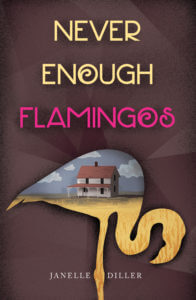
Book Club Questions
- The book begins with this statement: How you get to where you don’t know you’re going determines where you end up. How have you gotten to where you are? Given how you’ve gotten to this point, where will you most likely end up?
- What is the effect of the author’s use of first person narrative? What’s the impact on how it engages you as a reader?
- Secrets are a major theme of the book. Which secrets caused more problems because they were kept? Reflect on your own secrets. Why do you keep them or share them? What’s the impact on your life?
- How does the story parallel events in Europe during the same period in history?
- The Peters family was poor and the Yoders were wealthy. Both families were raised in the same culture yet had very different values. Is wealth a catalyst for changing values and beliefs?
- Several times throughout the book, characters question what the truth is. Do you agree or disagree with the statements? Why? Chapter 5: Life was simpler in those days. If Dad said something, it was the truth, whether it was true or not. Chapter 10: Most people really don’t want to know the truth if they think it’ll change what they want to believe. Chapter 17: There’s really no such thing as truth in the world. People believe what they want to believe, and that becomes the truth.
- At the macro level, countries sacrificed an enormous amount to fight Hitler. Cat gives the example of the rescue at Dunkirk, where a heroic flotilla of small boats crossed the English Channel and saved three hundred forty thousand British troops that were almost trapped behind German lines. What are we called to sacrifice—in war or at the societal level? What are you willing to sacrifice for your country, your faith, or your loved ones?
- Suzanne took action because she believed she had no other choices. If we think of morality on a scale of one to ten, with ten being completely right morally and one being completely wrong morally, where is Suzanne on that scale in the final chapters? Why?
- A familiar idiom in America is that the end justifies the means. Do you agree with this? If it’s situational for you, what are the situations where you would agree with this? Where do you disagree? Is this idiom truer for you on a macro (or country) level or micro (or personal) level? Why?
- How would various characters answer the previous question? Ezra? Ben? Cat? Simon? Suzanne? Henry? Dess? Rose?
- On a macro (or country) level, many people would say that going to war is morally right even though on a personal level, they would never intentionally hurt someone. Is your value system the same at the macro level as it is at the micro level? If not, where are there differences? Why are there differences?
Additional reading to add to the discussion:
If you’re curious about Mennonites, Third Way Café is a great first stop to learn more. The site includes blogs, conversations, reading suggestions, photos, and loads of FAQs.
The central storyline of Never Enough Flamingos is about sexual abuse. Today with the #metoo and #churchtoo movements, many resources to turn to, and the visibility of the issue, it’s possible the story might be different. In the 1930s, though, Cat Peters had few options. Women were considered to be second class citizens and children had even lower status. Here are some additional questions for your book club discussion.
- Sexual abusers often “groom” their victims by flattering them, giving them gifts, or making them feel valuable. How did Simon Yoder groom Cat?
- Sexual abusers often target people who are more vulnerable because they feel unvalued or unloved. What made Cat more vulnerable?
- What was Cat’s response to Simon Yoder’s behavior?
- Sexual abusers also often subtly find ways to buy the silence of other family members or friends or influence them into believing the abuser rather than the victim. What did Simon Yoder do that influenced Cat’s brother, Ben, and her father to discount what she is saying?
- How were females viewed in the 1930s that would have contributed to this?
- What was Cat’s mother’s perspective on Simon Yoder? What were the clues that made her suspicious about him?
- What made it difficult for Cat’s mother to stand up to Cat’s father?
- What was the turning point for Cat’s father in his willingness to believe her?
- Suzanne’s older sisters were all abused by Simon Yoder. What was the ripple effect of that abuse for them?
- If the story were written about today’s world, what options or resources would Cat or Suzanne have to reach out to?
When I do book talks, I’m often asked if sexual abuse is common in the Mennonite Church. The answer to that is that it’s no more and no less common among Mennonites than any other religious group. Mennonites are the print on the fabric of the story. The warp and weave are about how any time there’s hierarchy and power, there are vulnerable people—always children, often women.
Sarah McClure, in her Cosmopolitan expose, reveals a culture of abuse among the Amish. Although it’s about Amish, not Mennonites, again, it’s about hierarchy and power. It’s a fascinating read.
Surfacing the issue in a book club conversation requires courage and skill. Here are some websites that provide helpful resources:
Back to Top
Never Enough Sisters 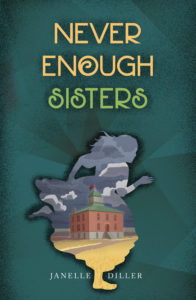
Book Club Questions
- What are the parallels between the story and events in Europe during the same period in history?
- This trilogy is about Mennonites. In what ways does their theology resonate with you? In what ways is it uncomfortable for you?
- In Chapter 2, Cat observes this: “We lived in a time when Mennonites believed in hierarchy. This was the order of our universe: God, man, woman, farm animals, mammals, avian, fish, insects, spiders, and amoebas. Consequently, except for the more forward-thinking among us, just as the worst human was considered to be of a higher order than the best farm animal, the worst and dumbest man was considered better and smarter than the best and smartest woman. This thinking occasionally led us down some bad paths.” What’s your hierarchy? Where does it take you? What’s the hierarchy of the family structure you were raised in? What has been the impact of that?
- In Chapter 5, Cat defends her Dad’s decision not to let Ben play basketball for Kansas State University. She explains that he was protecting his son from what he personally didn’t understand. What decisions for others or for yourself have you made that were because you didn’t understand something and so assumed it was wrong or risky? What was the impact of making that particular decision?
- In Chapter 10, Norma Miller says this about what has been going on at Simon Yoder’s: “I guess the truth is, we didn’t want to know. . . . If you knew, then you had to do something, and what could we have done?” Where do you see this thinking or behavior in yourself, your family, community, country, or the world? What’s gained and what’s lost by living this way?
- As with Never Enough Flamingos, secrets are a major theme of the book. In Chapter 12, Sam James tells Cat, “It’s not always good to keep a secret, especially one you never wanted in the first place? Why do you keep them? What’s the impact Never Enough Sisters has had on your life? What would happen if you shared the secrets?
- In Chapter 23, Cat wonders, “If it was okay for the world to resolve problems by killing, it must be okay for individuals to do the same. Did this mean that if it was okay for Suzanne to kill Si-mon, then it was okay for the Americans to start killing Japanese and Germans?” Should there be different moral codes at the macro level (state/country/world) than we have for the micro level (individual)? Why or why not? What if they would be the same?
- How have your values or perspective shifted as a result of reading Never Enough Sisters?
Additional reading to add to the discussion:
The Federal Writers’ Project, 1936-1940, was a US federal government project to employ white collar workers, such as historians, writers, teachers, and librarians, who had lost their jobs as a result of the Great Depression. It’s an amazing treasure trove of first-person accounts of Americans who lived at the turn of the century. Among the thousands of documents, you’ll find first-hand reports of being a slave, meeting Billy the Kid, surviving the 1871 Chicago fire, or being a pioneer. You’ll find an interesting collection of photos, as well. In fact, all of the photos in the guide are from the Federal Writers’ Project. The best part is that they’re copyright free, so they can be used for whatever you need.
Whether you’re researching the art or music of an era, a vocation such as farming or banking, a location, a famous person, or even Mennonites, you’ll find the collection to be a rich source of people’s experiences.
The Federal Art Project was similar to the Federal Writers’ Project. It employed painters, sculptors, muralists, and graphic artists. Other federally funded project for artists included the Public Works of Art Project (PWAP) (1933-34), the Department of the Treasury’s Section of Painting and Sculpture (1934-42; renamed the Section of Fine Arts in 1938), and its Treasury Relief Art Project (TRAP) (1935-38).
Back to Top
Never Enough Lilacs 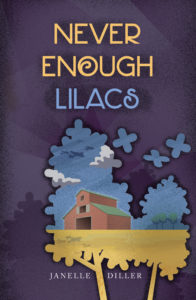
Book Club Questions
- The original title for this trilogy was The Secret War. What are the important secrets that shaped the lives of the characters? At various times throughout the three books, Cat muses that some secrets are better not known. What are some of the secrets that would have been better not to know? Why? What are some of the secrets that seemed better not to know but turned out to be important ones to know?
- In Chapter 9, Cat notes, “Patriotism is a religion.” How is patriotism like a religion? How is it different? What is the impact when patriotism becomes a religion?
- In his letter to the Peters family about Ben, Ernie Kowalski writes, “[Ben] confided in me that he made a conscious decision at some point to fight this evil, even if he lost part of his own soul doing it.” In Chapter 13 Cat says, “[T]here weren’t any more girls after Suzanne. She was the final one. How many girls had she saved by sacrificing herself?” Both Ben and Susanne sacrificed themselves to stop evil. Yet only one is revered for this sacrifice. Why?
- Forgiveness is an important theme in Never Enough Lilacs. In Chapter 23, Cat tells Ethel, “Those girls do need to forgive Simon and forgive you. But what are they forgiving if there’s been no change in you? How can it be from the heart? How can those words be anything but empty?” Can there be forgiveness if there’s been no change in the other person? Whom do you need to forgive? What will it take for you to forgive that person? Who needs to forgive you? What will it take that person to forgive you? What can happen if there is forgiveness?
- In Chapter 30, Cat observes she doesn’t know how entire countries forgive each other. Is it possible to forgive an entire country for their war aggressions? What happens if countries don’t? What happens when countries do?
- In the last chapter, Cat observes, “On August 14, 1945, the war ended. At least the bombs and the shooting part. Fifty-five million people died in World War II. Hundreds and hundreds of millions more suffered from wounds to their bodies or souls. It seems there should have been a better way to solve the problem of Hitler, but this was the only solution the world came up with. Unfortunately, we were sorely lacking in imagination those years.” It could be argued that the world is still lacking in imagination in how to resolve problems peacefully. What are specific things we could be doing as a country or as individuals to resolve problems more peacefully?
- Never Enough Flamingos begins with this: “How you get to where you don’t know you’re going determines where you end up.” Where will Cat, Suzanne, and Ben end up?
- After having read the full trilogy, Never Enough Flamingos, Never Enough Sisters, and Never Enough Lilacs, what impact has the story had on you? Has your thinking shifted about anything? If so, in what way(s)? How has this impact changed your behaviors?
- What will stay with you from the story?
Additional reading to add to the discussion:
In 1940, as it became clearer and clearer that the United States would enter World War II, President Franklin Roosevelt signed into law the Selective Service and Training Act of 1940. This law created the first peacetime draft in our country’s history, and it required every male age 18 to 65 to register. During World War II, 34.5 million men registered. Not everyone was willing to serve; however, the Act exempted only men who, “by reason of religious training or belief, is conscientiously opposed to the participation of war in any form.” Men could not ask for conscientious objector (CO) status outside of religious beliefs or because of opposition to a particular war.
Over 72,300 applied for conscientious objector status, but only about half received it. Of those, 25,000 served in noncombatant roles and 12,000 chose to perform alternative service, called Civilian Public Service (CPS). It’s important to note that 6,000 men were not given CO status and chose to go to prison rather than go into the military. The majority of men choosing CO status were from religious groups such as Mennonites, Church of the Brethren, Quakers, and Seventh Day Adventists.
Those who participated in CPS served in a variety of ways, often filling in for those who went into the military. They worked on conservation, forestry, and public health. Many worked as smoke jumpers and fought fires in the Pacific Northwest that were started by the thousands of timed incendiary balloons released by the Japanese. About 500 COs volunteered for medical experiments, testing, among other things, the affects of starvation and cures for typhus and malaria. Three thousand COs volunteered to work in mental hospitals and discovered first hand the appalling conditions of mental health care in the country. After the war, these men were instrumental in significantly changing how mentally ill people are treated and cared for.
Here are some resources to explore further. In addition, The Federal Writers’ Project, described above, has firsthand accounts of conscientious objectors.
Back to Top
Discover the 1930s 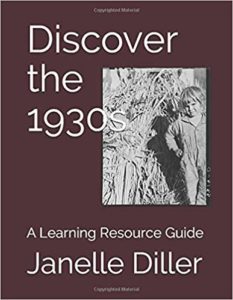
If you’re using the books from the Never Enough series as part of a class or deeper dive into the era, you’ll find the learning resource guide Discover the 1930s to be a rich resource.
Take your students or group back in time to the tired, dusty days of the 1930s. This instructional guide is loaded with activities that bring the era alive. The no-prep lessons teach students to use easily accessed primary research sources to build critical thinking skills while they discover more about the Great Depression and the Dust Bowl. The activities are tied to Common Core Standards.
While the lessons are designed to be used as a companion to the Never Enough trilogy–Never Enough Flamingos, Never Enough Sisters, and Never Enough Lilacs–most of the activities are also stand alone or easily adaptable to use with any novel or unit about the 1930s. They’re suitable for high school through adult learners.
Back to Top
Pack-n-Go Girls®
The Pack-n-Go Girls® website is loaded with teaching resources to use with each of the books. You can also find teaching materials on the Pack-n-Go Girls website.
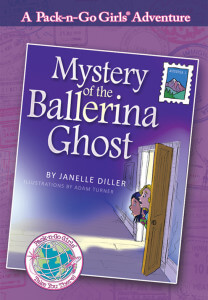
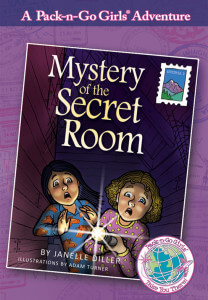
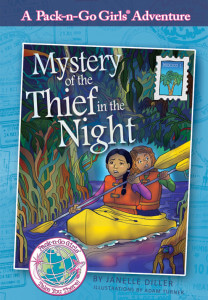
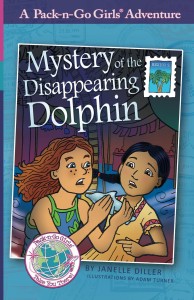
Back to Top



